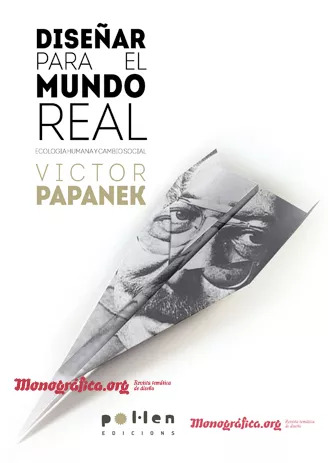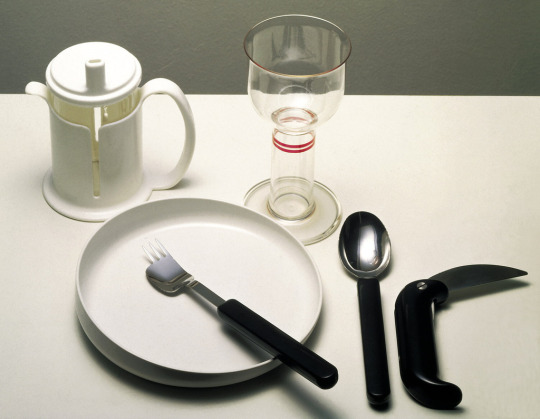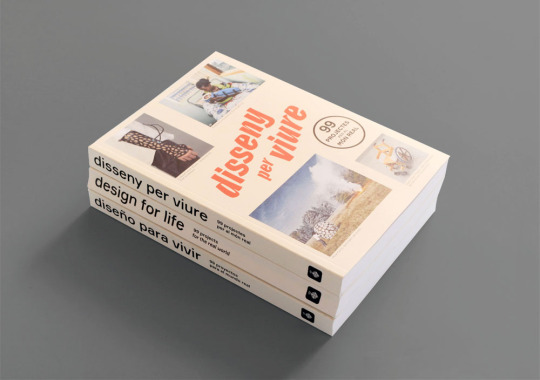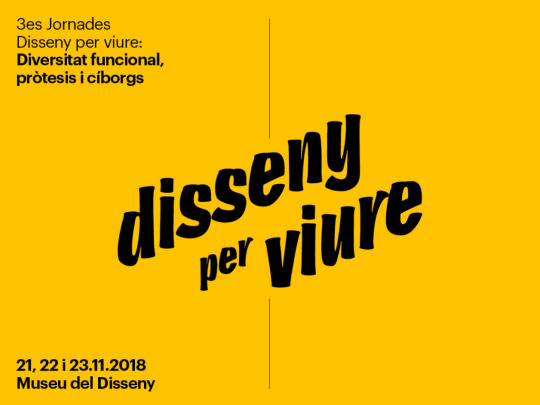#FixFilms
Explore tagged Tumblr posts
Video
youtube
Massana Art and Design school students create innovative solutions in collaboration with people with serious day to day challenges.
The world needs more people who can solve problems. Fixperts is a learning programme that unlocks people 's imagination and skills to get the world fixing problems, small and big. Veure més projects on the Youtube channel Fixperts (Fixperts Central) and free resources for universities and schools on www.fixing.education
Fixperts és un programa d'aprenentatge que desafia als joves a utilitzar la seva imaginació i habilitats per crear solucions enginyoses als problemes quotidians d'una persona real. En el procés, desenvolupen una sèrie d’habilitats transferibles valuoses, des del prototipat fins a la col·laboració.
fixing.education/fixperts
https://www.youtube.com/channel/UCX1Cr1fobwAUCw6P1qZik9g/videos
FIXPERTS, és una plataforma que connecta lxs dissenyadorxs amb les persones per desenvolupar projectes que aportin solucions útils i directes, mostrant els valors creatius i socials del disseny.
Fixperts tracta de connectar a dissenyadorxs amb gent que necessita una mica d'ajuda en les seves vides per desenvolupar projectes junts que ofereixin solucions útils a problemes reals.
Un espai obert a creadors provinents de qualsevol disciplina, que ajuden a resoldre les petites dificultats que es poden trobar les persones en el seu dia a dia aplicant la metodologia del disseny.Aquesta iniciativa planteja solucions intel·ligents a problemes reals, que es concreten en objectes o sistemes funcionals amb un cost reduït.
Els resultats són recollits en una peça documental que mostra el procés d’anàlisi i creatiu, l’experiència entre el dissenyador i l’usuari i la solució realitzada.Formar part d’aquest projecte implica:Explorar el nostre entorn més immediat.Aprendre a escoltar, comprendre i analitzar les necessitats dels altres.Crear un diàleg directe amb l’usuari final de l’objecte o solució.Desenvolupar una solució mitjançant un procés de disseny exhaustiu.Treballar en equip davant problemes reals.Desenvolupar un prototip final i totalment funcional.El fer és un tipus de pensament aplicat i un dels recursos més preuats de la humanitat. No obstant això, tot i que la majoria de gent té la capacitat de fer coses, la majoria no les fa. Aquest és un dels llegats més dramàtics de la revolució industrial.
Fixperts és un projecte creatiu i social que promou l'habilitat d'arreglar com una manera de tornar a introduir en les nostres vides la capacitat de fer.
Cofundat per James Carrigan i Daniel Charny, Fixperts tracta de connectar a dissenyadors amb gent que necessita una mica d'ajuda en les seves vides per desenvolupar projectes junts que ofereixin solucions útils a problemes reals. Marc Ligos i Diego Ramos han portat la idea de Fixperts a Barcelona,
http://fad.cat/congres/old/2013/es/?p=931
http://fixperts.org/about/http://fixperts.org/fixfilms/
Fixperts: Fixing is a way of Thinking
http://makezine.com/.../fixperts-fixing-is-a-way-of.../“
Fixperts” se dedica a solucionar los problemas del día a día. Es un proyecto social llevado a cabo junto con “fixpartners”, “fixperts” y “Fixfilmmakers”. “Fixpartners”: personas que quieren superar un reto. En este caso, la protagonista es Denise, que lleva pendientes desde que tenía 16 años. Debido a la EM no es capaz de ponerse los cierres de los pendientes sin la ayuda de alguien; la EM le ha afectado a la movilidad de sus manos, le provoca que las tenga dormidas y débiles. También le afecta a su visión. Denise es una persona segura de sí misma, una mujer independiente que vive de forma autónoma y usa pequeños utensilios para afrontar sus retos diarios, como puede ser el abrocharse los botones de la camisa. Pero si quiere ponerse pendientes, necesita ayuda. “Fixpert” en esta historia es Florie Salnot. Son diseñadores o realizadores que usan su imaginación, talento y habilidades para resolver un problema. Florie, que lleva unos bonitos pendientes de perlas, le pidió a Denise que le mostrara sus dificultades para ponerse los pendientes. Observa detenidamente cuando Denise le muestra que es capaz de ponerse los pendientes; pero Denise le explica que “poner el cierre, es una auténtica pesadilla” - See more at: http://perforaciondeoreja.es/los-pendientes-pueden.../...
https://vimeo.com/59580609
http://perforaciondeoreja.es/los-pendientes-pueden.../
en relació:
http://www.curroclaret.com/es/compartir_carrito.html
Els ‘makers’ i ‘fabbers’ es reivindiquen a Barcelona
La fabricació digital, el ‘do it yourself’ i el moviment ‘maker’ arrelen
http://www.ara.cat/.../makers-fabbers-reivindiquen...
Què és el disseny obert?
Un disseny que promou l’aplicació de principis sorgits a partir del moviment de programari lliure i de codi obert. Parteix de la idea que la creativitat i la societat en general es beneficien de les vies de comunicació obertes i de la transmissió lliure d’informació. Per això, el disseny obert busca compartir els processos de creació, distribució i fabricació d’objectes, idees o sistemes, perquè altres puguin usar-los per adaptar, re-formular, produir o distribuir aquests dissenys o contingut segons les seves necessitats.Per què creativitat compartida?La cultura del disseny obert està marcant molt ràpidament un canvi de paradigma en les indústries creatives i fa possible una economia col·laborativa d’un potencial enorme tant per a dissenyadors i creadors com per a usuaris i consumidors. És una àrea en plena efervescència que genera nous models de negoci, processos creatius innovadors i pràctiques de consum participatives.
Quin futur té la cultura del disseny obert?
Aquest nou paradigma comporta la promesa d’un impacte social positiu i sostenible, la creació de nous models d’intercanvi, la deslocalització i re-localització de la producció i la renovació dels processos de consum.D’aquests plantejaments alternatius sorgeixen, sobre la base de comunitats reals unides per la virtualitat de les xarxes socials, projectes amb llicències Creative Commons, processos de cocreació, productes de distribució global però de fabricació local i finançament col·lectiu i instàncies de consum col·laboratiu que rescaten del passat processos econòmics com l’intercanvi o el préstec.
http://fad.cat/congres/old/2013/
El referent
ENZO MARI, AUTOPROGETTAZIONE 2.0
Enzo Mari ja en els anys '70 introdueix el concepte de disseny obert.Compartia el seu codi i promovia que els usuaris s'impliquessin activament en el co-disseny i fabricació dels seus mobles. Mari va ser un pioner amb un missatge i una acció radical. El seu impacte ha estat lent però ferm. I en el camí la cultura digital ha vingut a ajudar a canviar les regles del joc. Avui compartir i crear col·lectivament és més ràpid, innovador i eficient que fer-ho en solitari i defensan-te dels teus "competidors". I en els últims anys s'ha gestat una nova consciència col·lectiva que ens fa entendre quina és la nostra responsabilitat comuna canviar el que no funciona de la nostra societat i fer realitat valors com la cooperació i l'ecologia, construint un procomú fort i inclusiu i sabent viure entre el local i el global.http://blog.mmodulus.com/el-diseno-abierto-un-sueno-que.../
http://makezine.com/2013/04/20/enzo-maris-autoprogettazione/
https://www.youtube.com/watch?v=zdzyiwlFaag
http://fad.cat/congres/old/2013/?p=768

https://pol-len.cat/llibres/disenar-para-el-mundo-real/
http://www.monografica.org/Proyectos/9749
DISSENY D'EMERGÈNCIA
Social
Disseny per viure. 99 projectes per al món real
Design for all
...Por lo que se refiere a la década de 1970, sus inicios se vieron sacudidos por el muy crítico libro de Victor Papanek Design for the Real World (1971), en el que aseguraba que el diseño se había convertido en «la herramienta más poderosa con la que el hombre da forma a sus utensilios y ambientes (y, por extensión, a la sociedad y a sí mismo).» Como ha señalado Penny Sparke, Design for the Real World fue en esencia una extensa crítica al estado ideológico del diseño en aquellos momentos y una llamada a que los diseñadores prestaran más atención a los problemas reales.Cinco años después de la primera edición de dicho libro, en 1976, el Royal College of Art junto con el ICSID organizó el congreso «Design for Need», en el que se trataron diversos temas, entre otros, el diseño en los países del Tercer Mundo, las posibilidades de la tecnología, así como un amplio número de asuntos de carácter social ...
aquí:
https://objecteiespai.tumblr.com/search/Victor+Papanek

...También en los años 1970, y con la intención de crear un diseño más inclusivo, Maria Benktzon y Sven–Eric Juhlin, crearon el Ergonomi Design Gruppen, para diseñar objetos funcionales y atractivos alejados de la falta de interés estético que, hasta entonces ...
http://www.monografica.org/02/Art%C3%ADculo/2909
https://www.moma.org/artists/8697
https://www.moma.org/artists/6935?locale=es

http://ajuntament.barcelona.cat/museudeldisseny/ca/exposicio/disseny-viure-99-projectes-al-mon-real

http://ajuntament.barcelona.cat/museudeldisseny/ca/activitat/3es-jornades-disseny-viure-diversitat-funcional-protesis-i-ciborgs
https://www.nuvol.com/noticies/dissenyar-per-a-la-condcio-vulnerable/
youtube
youtube
2 notes
·
View notes
Video
instagram
I'm working on some exploration beat boards for @fixfilm2018 #fixfilm #cinematography #filmproduction #shortfilm #indiefilm #losangeles #hollywood #storyboard #mood #composition (at Los Angeles, California)
#fixfilm#cinematography#filmproduction#shortfilm#indiefilm#losangeles#hollywood#storyboard#mood#composition
0 notes
Text
“Who owns the ideas?” – Paul Micklethwaite
Stage 9 of the ‘Fixperts Project Framework’ is “Presentation: Present the movies, talk about you’re (sic) experience, review the process and solution. Discuss the potential of harvesting the fix for other users, designing a new product or service or creating a report to improve industry.” (Fixperts Education Project Guidelines, page 3)
‘Harvesting the fix’ might mean replicating it with similar users or in similar scenarios:
“After presenting the fix to the London Ambulance Service, we were commissioned to produce 50 more; one for each cycling paramedic working in London.” (Paramedic cyclist video, closing credits)

Still from Paramedic cyclist of the final prototype.
This is a logical move when the fix addresses a problem faced by a number of users - in this case how to keep a piece of medical equipment which is used orally clean and protected from the elements when mounted on a bicycle used in all weathers. Presumably each of the 50 paramedics is issued with a standard kit of equipment, and so the problem faced by this FixPartner (and solved by the Fixperts) will be common to his colleagues. The same might apply to the Dairy Crest fix, in which the Fixperts worked with a milkman to address the apparently universal problem of customers leaving notes which are often not seen by the milkman because they are left in ad hoc locations, and milk is often delivered before the sun has risen. In this case the fix addresses a challenge faced by a service provider across a significant scale of service delivery. A communication design solution which works in one case is likely to work in all other cases.
These examples contrast with fixes which are bespoke one-off responses to individual situations and their very particular needs, for example Whippersnappers (in which the fix was a site-specific reorganisation of available storage space). This type of fix is summed-up by one FixPartner when presented with the first prototype of his fix:
“It’s designed for me rather than designed for everyone.” (Patrick video, 2.25)

Still from Patrick of the final prototype
The fix in this case responds to the requirements of a FixPartner with a very particular set of physical challenges. Patrick is unlikely to be typical of a large number of users; therefore the fix developed for him is more limited in its direct repeatability. In this case, what can be ‘harvested from the fix’ is perhaps the process by which the collaboration took place, and the knowledge gained by the Fixperts about working with someone with Patrick’s degree of physical disability. The understanding gained and principles established by the Fixperts in order to deliver a fix of value to Patrick will perhaps be useful when working with FixPartners with similar (if not identical) needs as Patrick.
This consideration of the replicability or transferability of fixes generated by fixpert-fixpartner collaborations raises the issue of ownership. Here is the stated position of the Fixperts project:
“Who owns the ideas? The ideas, inventions and intellectual property belong to those who create them.” (Fixperts Education Project Guidelines, page 4)
Presumably this is the Fixperts, who, while they collaborate with a FixPartner, are very much designing a solution for, rather than with, them. This is user-centred design, rather than codesign. The needs of the FixPartner are placed at the centre of the design project, but the FixPartner is not an active participant in the design process itself. Patrick is a product design graduate, and therefore has capabilities in design thinking which probably exceed those of most FixPartners. As such he might be considered an exceptional case, in that he might himself conceive of viable design solutions to his needs independently of his Fixperts. Patrick’s disability came after his design training – “I sustained a 'Traumatic Acquired Brain Injury', and a six month coma from a 'road traffic accident' whilst cycling, in October 2006.” (http://patrickgoodacre.blogspot.co.uk/) – and now inhibits his ability to be as active as he would like to be as a designer. His background does however highlight the potential value in codesigning fixes, with the Fixpert acting as a facilitator of a shared design process, more than a conventional designer-client relationship.
The issue of ownership is relevant to the potential wider exploitation of fixes. ‘Harvesting the fix’ might after all also potentially mean seeking to extract commercial gain in return for adding value for a significant number of prospective users, although this is yet to be discussed openly in the Fixperts project. The Creative Commons system of copyright licenses allows the creators of protectable content to retain and/or waive a number of their rights in relation to that content, for the benefit of others. (http://creativecommons.org/) The spirit of Fixperts would seem to fit with this progressive attitude to ownership - perhaps use of CC licenses for fixes is a useful next step for the project? Fixes are embodied and applied – not abstract – ideas; they are therefore potentially (but not necessarily guaranteed) protectable. CC might allow the project to better protect the interests of its collaborators, Fixperts and FixPartners alike? Intellectual property law is intended to ensure that the entrepreneur pays dues to the inventor whose concept she is taking to market as an innovation. Where the inventive step is distributed among multiple actors, as in codesign, acceptable attribution can become difficult. For Fixperts, for now, this issue is straightforward, but it may not always be so.
All videos can be seen at: http://fixperts.org/fixfilms/
1 note
·
View note